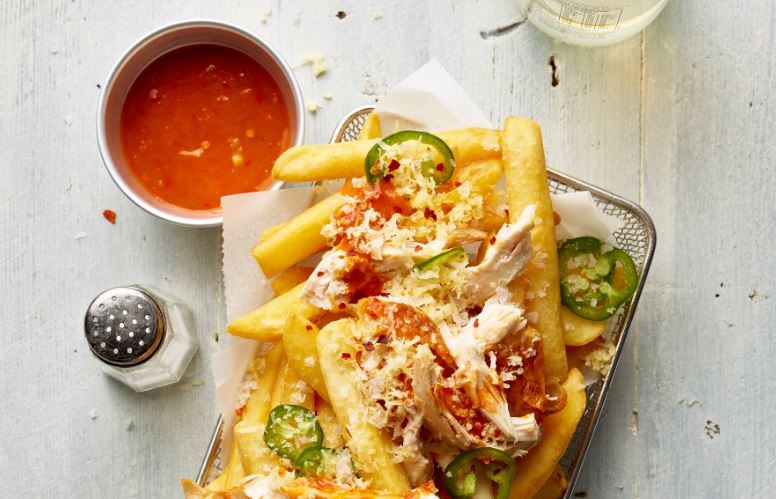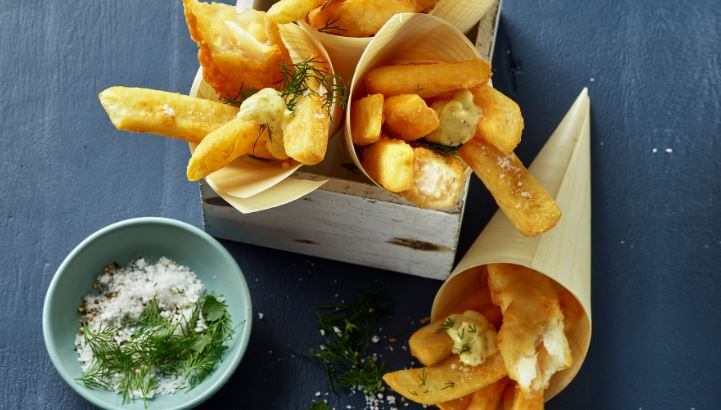Of superstar Audrey Hepburn was still around today, she would no doubt have been an advocate of encouraging happiness. She once famously said: “The most important thing is to enjoy your life – to be happy. It’s all that matters.”
Yet, what better place to find joy than in the pub? As a trade, we’re geared towards encouraging fond memories and sparking euphoria.
However, inspiring such emotions in an increasingly demanding world can sometimes feel impossible. Fortunately, new research commissioned by chip maker McCain suggests the trick to securing a customer’s bliss needn’t be so hard to wrangle.
And, of course, another person’s happiness usually has positive knock-on effects and, in this case, for the pub, it can mean good reviews, free promotion through a customer’s social media channels as well as word-of-mouth praise. But how do you get your hands on such business-boosting goodness?
Four key elements
McCain teamed up with the Happiness Index to uncover what really makes diners happy when eating out and, therefore, how to bag that positive review.
Some 1,000 UK respondents who had eaten out within the past six months were interviewed for McCain’s Happiness Index in a bid to understand which aspects of the out-of-home dining experience made a customer truly happy.
The results showed that getting just one – or all of four things right – would set a pub in good stead to make a punter happy. These were: food (34%), service (27%), value (21%) and environment (18%).
“It’s probably no surprise that food comes out as the most important factor,” said marketing controller for McCain Foods GB Ltd, Jo Eastwood. “However, which aspects of food, specifically, are driving diners’ happiness?”
Chips matter for review

A whopping 85% of people admit to stealing a chip from someone else’s plate before their meal arrived (cheeky) and 31% said it’s always the first thing they try.
Chips are the first food encounter a diner has with a pub, bar or restaurant. The quality sets a precedent for the meal to come and, ultimately, leaves a lasting impression. In fact, the Happiness Index survey revealed 53% of customers would leave a bad review if their chips did not live up to their expectations.
In fact, chips were so important that three in 10 diners said they would vote with their feet and leave if the kitchen ran out of chips!
When probed further into the relationship between diners’ satisfaction with the quality of chips and the star rating given to a pub, bar or restaurant, it appears better chips are positively correlated with higher star reviews.
With this potential for chips to make or break a meal out, we decided to build a model to deconstruct what the key factors are for making the perfect chip when influencing an online review.
Taste generated the most happiness for diners when they take the first bite of the ‘often-stolen’ chip! Followed closely by crispiness and fluffiness generating high levels of emotion when it came to the chip experience.
Get the taste, crispness, fluffiness and heat right when serving a perfectly portioned side of chips and you’re 80% of the way there to total chip perfection. Delicious, great-quality chips can boost your star ratings by up to 26%.
Get them wrong at your peril! Some 40% of diners said they would leave a bad review after a terrible chip experience. They defined a bad chip as tasteless, soggy, greasy and cold with no fluffy potato filling.
Increasingly, range is becoming more important to diners as certain chip varieties have become synonymous with key mains.
See www.mccainfoodservice.co.uk for more information.
A big question which, needless to say, the report has also covered, subsequently revealing some interesting truths about what a customer seeks when it comes to food delight.
The biggest contributor was the quality of the ingredients used in a dish, with 34% of those asked stating its importance, followed by 23% for range, 19% for portion sizes, 13% for the ability to personalise a dish, 10% for the quality of the chips and just 0.4% claiming to want a range of speciality meals. You can see in the below chart how the other three elements were broken down.
“Great food quality is the most important happiness indicator in the minds of the customer,” continued Eastwood.
“But it turns out that size doesn’t matter, at least not as much as taste, which makes diners nearly twice as happy than being served a large portion of average-quality food.
This demonstrates the increasing demand for quality over quantity, which is great news for operators who can reduce food waste by serving perfectly sized, better quality portions and make diners even happier.”
Quality counts
And don’t think ‘high quality’ doesn’t extend to the humble chip. Chips are so important that three in 10 diners, according to McCain’s research, would walk out of a venue if it ran out of chips.
But customers don’t want any old chip, according to Eastwood. “When we probed further into the relationship between diners’ satisfaction with the quality of chips and the star rating they gave the pub, bar or restaurant, it appears better chips are positively correlated with better star reviews.
“With this potential for chips to make or break a meal out, we decided to build a model to deconstruct what are the key factors in the perfect chip when influencing an online review.” (See Chips Matter box).
Size is also a factor when it comes to range. If you think a larger offer on the menu is going to increase a customer’s happiness, you might want to think again.
In fact, McCain’s research showed that almost half (47%) of diners experienced ‘decision-making paralysis’ when ordering from a menu.
Eastwood explained: “As we all lead more stressful working lives, we are finding it more difficult or tiresome to make decisions in our leisure time. This ‘stress’ moment can have a negative impact on the experience, so needs to be considered and avoided.”
Shorter but sweeter
That is sage advice, considering getting the balance right between too much choice and not enough can be difficult.
Many complaints on review sites are about menu options, with many consumers citing too much choice as a gripe.
“So, it’s a balancing act,” continued Eastwood. “Menus need to offer enough choice to make guests happy, but not too much to trigger ordering tension.
“A short, but varied, menu that’s well signposted can ease any problems. Side orders are a great way to add choice without complexity, and also allow for a level of personalisation, which is very important (13%) when it comes to achieving customer satisfaction.”
We have focused on food because it is the biggest dictator and contributor to happiness. But, the elements of service, environment and value (see Key Elements above) are as important in attaining positive reviews, as well as sparking glittering social media praise.
In review
But appraisals are powerful. In a world of disposable content on social media, reviews are permanent and easily accessed by any member of the public indecisive about whether or not to eat at your venue.
“Some 78% of diners say they’ve left an online review, with around 20% doing so frequently,” explains Eastwood.
“This means there’s a hard core set of reviewers out there, controlling the agenda. Our research has identified these as the ‘organisers’ who punch above their weight when it comes to opinion forming.”
Key elements for reviews

Service – getting this right has the second highest impact on happiness and positivity when it comes to reviews. Be efficient, friendly and ensure you keep waiting times to a minimum
Environment – keep it clean (hygienically and visually). Unique styles and spaces are likely to draw the Instagram crowd in, but you only want this if you can offer excellent food and great service at an acceptable value
Value – cost is at the forefront of 76% of consumers’ minds and the value of a meal will impact a review. It doesn’t, however, mean customers want a cheap meal – they want good value for what they’re paying. Food quality, service and décor all play an important role in value perception
For more information on the above, see the full report online at www.mccainfoodservice.co.uk
To put that into perspective, more diners read reviews than leave them, with 90% using review sites and social media to help choose the right place to eat. More so, 85% of those askedfor McCain’s Happiness Index said they wouldn’t consider eating somewhere if it had less than a three-star rating online.
“With food quality, closely followed by service, being the most influencing factor when it comes to leaving positive reviews, it’s essential operators regularly walk in their customers’ shoes,” says Eastwood.
“Objectively reviewing the customer’s journey from booking a table, to evaluating the choices and quality of the food is the most important task as an owner, manager or chef, but often gets pushed aside when day-to-day business gets in the way.”
Social media channels
When it comes to review sites, the leader is TripAdvisor with 78% of those asked citing it as their preferred platform, followed by Google Reviews (59%). And while there may be two clear places for pubs to watch for reviews, diners use a mixed media.
The over-60s, for example, will go direct to a pub’s website, while the under-30s look at a venue’s social media before deciding where to eat.
“Unsurprisingly, younger diners are more likely to use image sharing and social media platforms like Instagram (20%) than people over 45 (3%),” explains Eastwood.
“Facebook is the social media channel of choice for the over-45s, who often use their friends’ Facebook recommendations (26%) as a source of guidance compared to only 15% of diners, aged under 30, who fess up to copying other people’s choices of where to eat.”
So, there we have it, an achievable guide to customer bliss, that wasn’t War and Peace and doesn’t involve having to steal a million, nor will it leave anyone with a funny face.

